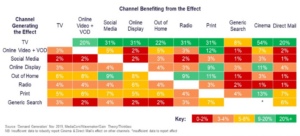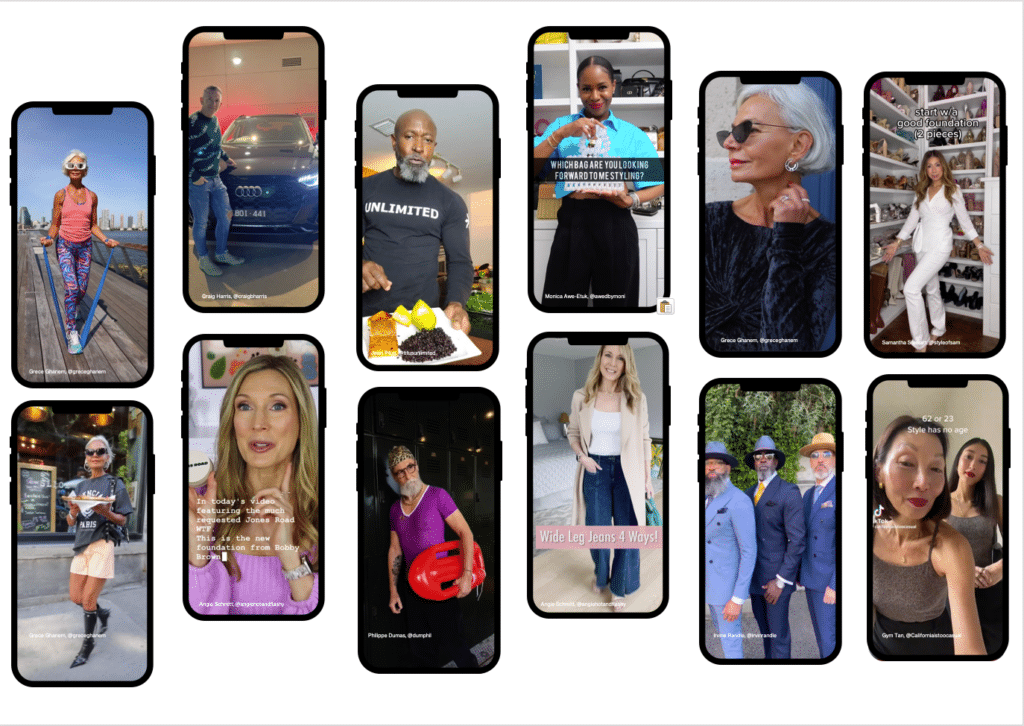We are coming out of the ‘because we can, we should’ era of digital media where the seemingly infinite range of formats, targeting, vendors, publishers, tech and data led to a seemingly infinite range of ways to measure. Combined with the ease of use and instant scale of some of the large platforms, there has been a wave of bad digital measurement practises, leading to efforts focussed on marginally increasing an instant metric rather than focussing on incrementality and brand uplift.
No1 Clicks
‘Don’t be a clickhead’. Even the IAB is telling you to stop using clicks as a metric of anything useful, to the point where they have a National Anti-Click Through Rate Day. We have seen in multiple studies for grocery clients that there is zero correlation between clicks and product sales or brand uplift.
The greatest stat ever released is from ComScore in 2009 where they found that 85% of clicks are done by 8% of people. If you tell a platform you want clicks, you will target people who click, not people useful to your end goal. 14 years later we still see click, clickthrough rate and cost-per-click display and video campaigns – it has to stop.
No2 Attention
Attention is getting a lot of attention at the moment, which is great. We have always planned to attention, whether it is position-in-break in TV, position in press, rich formats in display and so on. The current focus is due to a swathe of (very good) partners who can measure some digital formats in increasingly complex ways. This is fantastic for understanding media health and how this contributes to business performance.
The challenge is the focus on a single attention metric. Do you need to remind people who already have high mental availability? Or are you launching a new product and need to land a complicated message?
In either case you need different types of attention. This leads to different media choices and measurement. Which we have always done. Karen Nelsen-Field recently said that scrollable media has far shorter attention than unscrollable media. However, we know Facebook delivers good business results for our clients. So, if a low(er) attention platform can still deliver business results, this suggests that different types of attention can be used for different purposes.
No3 Video completion
Watching half a 30-second ad delivers the vast majority (80%) of the effectiveness of the ad (JSTOR). Delivering videos watched to 50% vs 100% are two very different optimisations. Chasing completed views means either going into forced-view media, which tends to increase the costs, incentivised media, where there is questionable attention, or even fraudulent videos playing in the background purely to hit the metric.
No4 Cost-per-acquisition (CPA)
We know no one normal clicks on ads from above, and how many people are buying off the back of seeing your ad? What about the impact of media that isn’t accounted for in attribution systems, like TV? Our Demand Generation study (table below) found that all channels benefitted significantly from TV ads, and up to 71% of web-based sales came off the back of a TV-generated response. However, an attribution system won’t see this TV influence, and might attribute the success of a sale to a search ad which was in fact prompted by a TV ad, leading to misaligned budget allocations and ineffective planning.

No5 Followers and engagement rate
Why would a platform funded by advertising give you free advertising? Organic reach in social platforms has been on a steady decline and hovers at around the 5% mark for best-in-class scenarios, but this drops significantly if you have a large amount of followers. We must also consider that your followers are either employees or people who already actively like you, so there is little incrementality to be found in preaching to the converted.
As for targeting engagements, Facebook has been telling us for a decade that they have no correlation with business metrics, which has been backed up by our own studies, so they should be stopped too.
So, what do we do?
Isolated measurements, particularly in digital channels where the data can be flawed and biased, will always be easy to criticise when looked at under a microscope. Also, brands have been (and are) using these metrics and seeing success, so this isn’t a call for all-out change, more a plea for uncomfortable common sense.
Most of the above points are specific measures that exist on a spectrum where the right answer lies. For example, there is no silver bullet for how you measure video. It is easy to say what is definitely wrong, but a consistent measure for video across live broadcast TV, YouTube and a mobile interstitial is hard. Multiply that by measuring media health, success of the tactics behind the impression and the overall shifts in brand health and you have a complex situation to navigate.
The good news is that we have an approach that consistently works for clients. We employ a portfolio approach to measurement that has multiple layers of measurement to make sure we are delivering incremental growth in the best media.
We start with macro business measures, making sure that the media is driving growth and we can isolate the impact of media in the wider client eco-system. At the next layer down we have campaign-level measurement, looking at how well specific campaigns are performing at a channel and creative level. Then finally we have media health metrics which are the daily checks we do to make sure we are in the best place for our clients and audiences.
In this way we avoid relying too heavily on any one metric or type of metrics, can ‘balance out’ any misleading metrics and keep refining in real time to make sure our metrics are as good as our media choices.
Andrew Spurrier-Dawes, EMEA Head of Precision at Wavemaker








